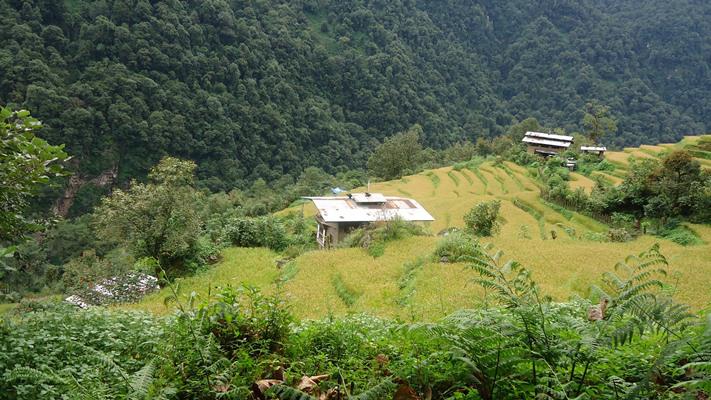Sonam Phuntsho
The aim of the project is to assess human-tiger conflict, communities’ perception toward tiger and to enhance local residents’ awareness on conservation of endangered Royal Bengal tiger.

Settlement in the study area.
Human-Tiger Conflict (HTC) has become one of the most critical issues in Bhutan resulting into loss of livestock and even threat to human lives. Since more than half of the country’s population are subsistence farmers and depend on the crop and livestock farming for their livelihoods where the loss of livestock is serious in Bhutan. Tiger is one of the main predators of livestock in the study area which may jeopardize the goals of wildlife species conservation in Bhutan as a result of retaliatory actions in Bhutan. Bhutan is known for its outstanding work on wildlife species conservation globally but is not clear whether the conservation is happening at the cost of peoples’ livelihood. Therefore, understanding the level of HTCs and generating awareness on the tiger conservation is essential.
The project will assess the HTCs employing questionnaire-based survey, in terms of temporal and spatial extent of conflicts between human and tiger, the habitat use by tiger. The project will also document the local peoples’ traditional method of livestock protection and how they perceive that the tiger habitat can be best protected. The consultation with local people will be used for recommending conservation strategy and also to have a basis to generate or enhance awareness about tiger, its migration, habitat and effect to local people.
This project is expected to help understand the HTCs and design science based management to reconcile conservation and development.